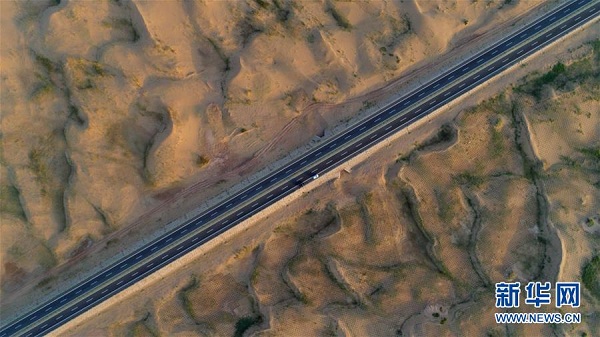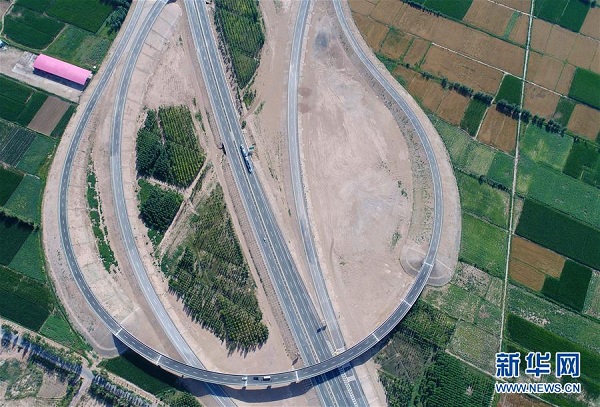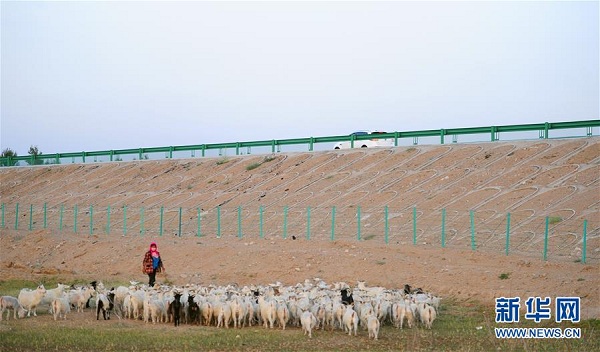Work finishes on Beijing-Urumqi highway

With the three final sections paved, the 2,768-kilometer-long Beijing-Urumqi Highway was completed on July 15, shortening the journey from China’s capital to Xinjiang Uygur autonomous region by nearly 1,300 km.
The three sections –– Linhe-Baigeda, Baigeda-Mingshui and Mingshui-Hami –– link the provinces of Inner Mongolia, Gansu and Xinjiang.
The Linhe-Baigeda Highway (linking Bayannur League in Inner Mongolia to Alxa League on the border between Inner Mongolia and Gansu province), stretches 930 km and is recognized as the world’s longest stretch of desert highway.
The Linhe-Baigeda Highway has four lanes, running through the Badain Jaran Desert (the third largest desert in China) and the Gobi Desert, both of which are mostly uninhabited areas.
The project involved thousands of workers and was jointly undertaken by China Communications Construction, China Railway Group, and China State Construction.
As a major project of China’s Belt and Road Initiative, the world’s longest desert highway aims to improve connectivity and trade among countries along the ancient Silk Road from Asia to Europe.

The Linhe-Baigeda Highway in Bayannur, Inner Mongolia autonomous region on July 14. [Photo/Xinhua]

An interchange along the Linhe-Baigeda Highway in Bayannur, Inner Mongolia autonomous region on July 14. [Photo/Xinhua]

A herd of sheep walk along the side of the Linhe-Baigeda Highway in Bayannur, Inner Mongolia autonomous region on July 14. [Photo/Xinhua]







